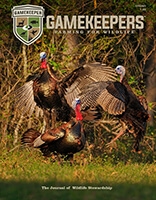Every seasoned deer hunter knows that the lead-up to the rut is a time of transformation in the woods. Bucks begin shifting from their summertime feeding patterns into a more active, territorial mindset. They become increasingly focused on does, rivals, and marking their presence across the landscape. This behavior manifests in several ways—rubbing trees, changes in their body language, vocalizing, and perhaps most notably, creating scrapes. These pawed-out areas of earth beneath overhanging branches (licking branch) serve as olfactory calling cards, and understanding how to mimic them is an invaluable tool in a hunter’s arsenal.
Mock scrapes have become an increasingly popular tactic among deer hunters, and for good reason. When created properly, they trigger a natural and irresistible behavioral response in bucks, drawing them into shooting range and making them more predictable. Using the right products and techniques can greatly increase the effectiveness of mock scrapes. Wildlife Research Center’s Golden Rope and Scrape Dripper system offers a reliable and scientifically sound method for creating these mock scrapes—and for keeping them active throughout the season.
To understand the power of mock scrapes, it helps to first understand the science behind natural scrapes themselves. A genuine scrape is typically found under a low-hanging branch (usually about four to five-feet above the ground), where below the branch a buck has pawed the ground and left scent from glands in his hooves (interdigital glands), urine (normally run down their back legs and through their tarsal glands), and most often saliva and scent from their forehead and pre-orbital glands on the overhead licking branch. Other deer, including does, will often visit these scrapes to investigate the scent and leave their own, creating a communal scent post. Bucks frequently revisit their scrapes during the pre-rut and rut, checking for new activity and reinforcing their own presence. In this way, scrapes function as territorial and social signposts—making them prime real estate for hunter engagement.
With mock scrapes we are aiming to replicate their natural behavior and, when placed and maintained effectively, can actually outperform natural scrapes. This is where the following products shine. The Golden Rope is a specially designed natural fiber rope that has high absorption and no chemical treatments, with a coarse, braided texture. This rope will replace the licking branch, and from what I’ve seen thus far, may actually work better. I must also note: that when hung in a good location, often they hit this rope even when it hasn’t been treated with scent. It’s durable and weather-resistant, making it a reliable option for prolonged use in the field. When paired with the Magnum Scrape-Dripper (a heat-activated scent dripper), you create a dynamic and consistent scrape site that not only attracts bucks, but also encourages daytime activity—a key benefit for those looking to increase their odds during legal shooting hours.
Another major point is that they (both bucks and does) will hit these Golden Ropes all year long! Making them great places to set up trail cameras. It is like Facebook for deer—it is a way to communicate social messages to other members of the herd.

Paul Landberg
Setting up a successful mock scrape begins with location. Scrapes are more than just random spots; they’re strategically placed by bucks to transmit their message to as many members of the herd as possible. When choosing a location for your mock scrape, think like a buck. Field edges (those closer to bedding areas), trail intersections, staging areas near bedding zones, and pinch points between food and cover are ideal. These areas are natural travel corridors for deer and tend to see higher scrape activity during the season. I tend not to spend much time on field edges around destination feeding plots/fields since they are normally visited after dark.
If the perfect overhanging branch is missing, no problem—the Golden Rope was made for this. You can hang it from just about anything: a tree limb, a wire, or even a homemade T-post structure. What’s important is height and placement. The rope should dangle roughly four to five-feet above the ground, at muzzle level for a mature buck. Once installed, apply your preferred scent—my favorites are the Golden Rope concentrate that comes with the rope, Active Scrape or Golden Scrape, but once the rut is close even Special Golden Estrus can be used. The rope will absorb and gradually release scent over time, simulating the scent left behind by visiting deer.
In a side note, if the perfect height licking branch cannot be found and you don’t want to use a Golden Rope, try an Active-Branch. You can easily set up the Active-Branch on a tree or wooden post in the perfect location. It allows you to mount two branches at the same time—an interaction branch at the perfect height and a second branch above on which to hang your dripper.
With your licking branch or Golden Rope in place, it’s time to create the actual scrape. Use a stick or rake to clear a circular area directly beneath the Golden Rope. Scrapes should be about three to four feet in diameter, with all vegetation, leaves, and debris cleared to reveal fresh soil. Here is another caveat: the smell from the freshly disturbed soil alone can also attract deer even when no scent is used. However, the smell will quickly dissipate after a day or two, so I suggest one of the scents mentioned previously. This is also a visual cue mimicking a real scrape and catches the attention of passing deer. The exposed dirt also holds scent more effectively and provides a canvas for bucks to leave their own scent as they investigate.
What sets Wildlife Research Center’s Scrape-Dripper apart is its timed functionality. Unlike basic scent drippers that release scent continuously, the Magnum Scrape-Dripper and the Super-Charged Scrape Dripper are temperature-sensitive, dripping only during the warmer daylight hours. This feature is a game-changer. It tells deer that the scrape is being visited during the day, subtly encouraging bucks to check it during daylight hours themselves. For hunters, this means more visibility and shot opportunities during legal shooting light. It also conditions them to spend more time in the area.

Paul Landberg
The dripper can be filled with a range of attractants, but again, timing is everything. Most often I will make several mock scrapes and vary the scent used at each. If you don’t have enough ropes or drippers, simply use a wick near the licking branch. If I check the spot before I hunt it and notice there is a preference shown to one scent or another, I will typically change all locations over to the preferred scent. Be careful to keep your human scent out of the picture—rubber gloves, rubber-bottomed boots and Scent Killer are standard tools for this operation.
Another benefit of mock scrapes is the opportunity for surveillance. Setting up a trail camera facing the mock scrape gives you crucial intel. You’ll be able to catalog bucks, monitor their patterns, and identify when your target bucks begin checking the scrape. It’s not uncommon to see a dominant buck visiting a mock scrape for weeks leading up to the rut, gradually increasing his frequency until he shows up almost daily. That kind of predictability can be invaluable in planning your hunts.
These scrapes will most often be visited by multiple deer. I recall one instance while hunting Manitoba years ago, where twelve different bucks visited a mock scrape I had made during one morning’s hunt. Obviously this was before the Golden Rope, but it shows the power of the Magnum Scrape Dripper.
Maintaining a mock scrape is just as important as creating it. Deer are creatures of habit, and if they find a scrape that appears to be frequently visited, they’ll adopt it as part of their routine. This means refreshing the scent regularly—every seven to ten days is a good rule of thumb. If rain washes out the scrape, make sure to reapply scent and clear the soil again. Avoid over-saturating the area, though.
Mock scrapes also serve as excellent tools for gamekeepers managing a property. If you wish to monitor the age structure and health of your local herd, strategically placed mock scrapes can give you a window into your deer population. You can monitor buck-to-doe ratios, identify young bucks for future seasons, and evaluate antler growth and body condition. In this sense, mock scrapes become both a hunting aid and a data-gathering asset.
One often overlooked benefit of mock scrapes is their role in conditioning buck movement. By placing scrapes near stand locations, hunters can influence how bucks travel through a property. When multiple mock scrapes are placed along a travel corridor, they can subtly steer deer past preferred ambush sites. When combined with smart approach routes and wind planning, this strategy becomes a low-pressure way to increase encounters with mature bucks.
As with any hunting tactic, mock scrapes are most effective when integrated into a broader strategy. They are not a magic solution, but when combined with good stand placement, diverse food sources, wind discipline, a water source and an understanding of deer behavior, they offer a significant edge. Kind of like creating a mature buck playground. Using Wildlife Research Center’s Golden Rope and Scrape-Dripper system simplifies the process and increases your chance of success by leveraging real whitetail biology and behavior.

Agnieszka Bacal
In conclusion, creating a successful mock scrape involves more than just clearing dirt and dripping scent. It’s about understanding why bucks use scrapes in the first place, mimicking those natural behaviors, and using the right tools to make your scrape a compelling and believable communication post. This system offers hunters a proven, field-tested way to attract and hold buck activity, especially during the critical pre-rut and rut periods. By placing your mock scrapes strategically, maintaining them with the proper scents, and using tools that simulate real deer behavior, you can make your hunting grounds a prime destination for territorial bucks—and dramatically increase your odds of success this season.









